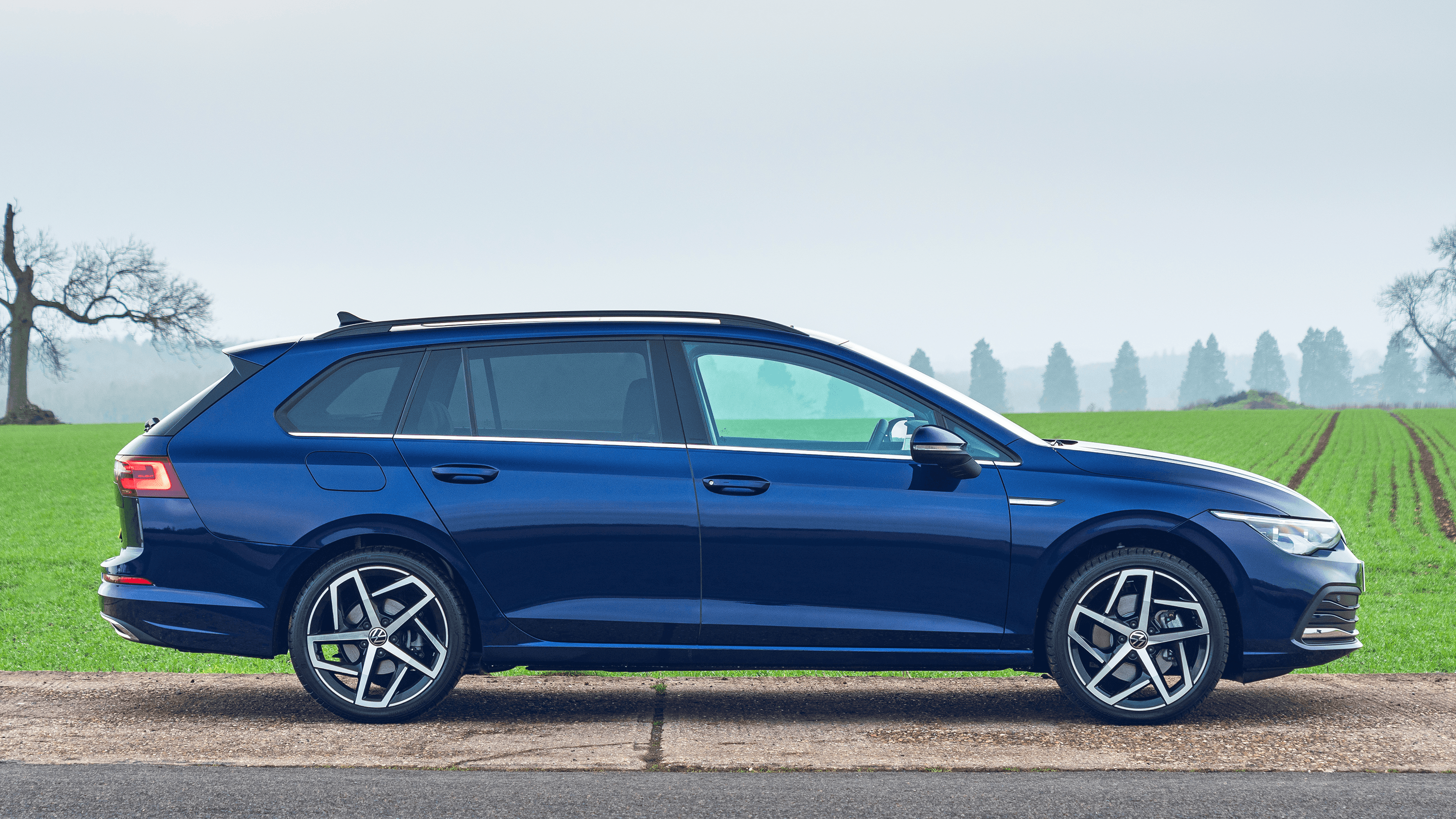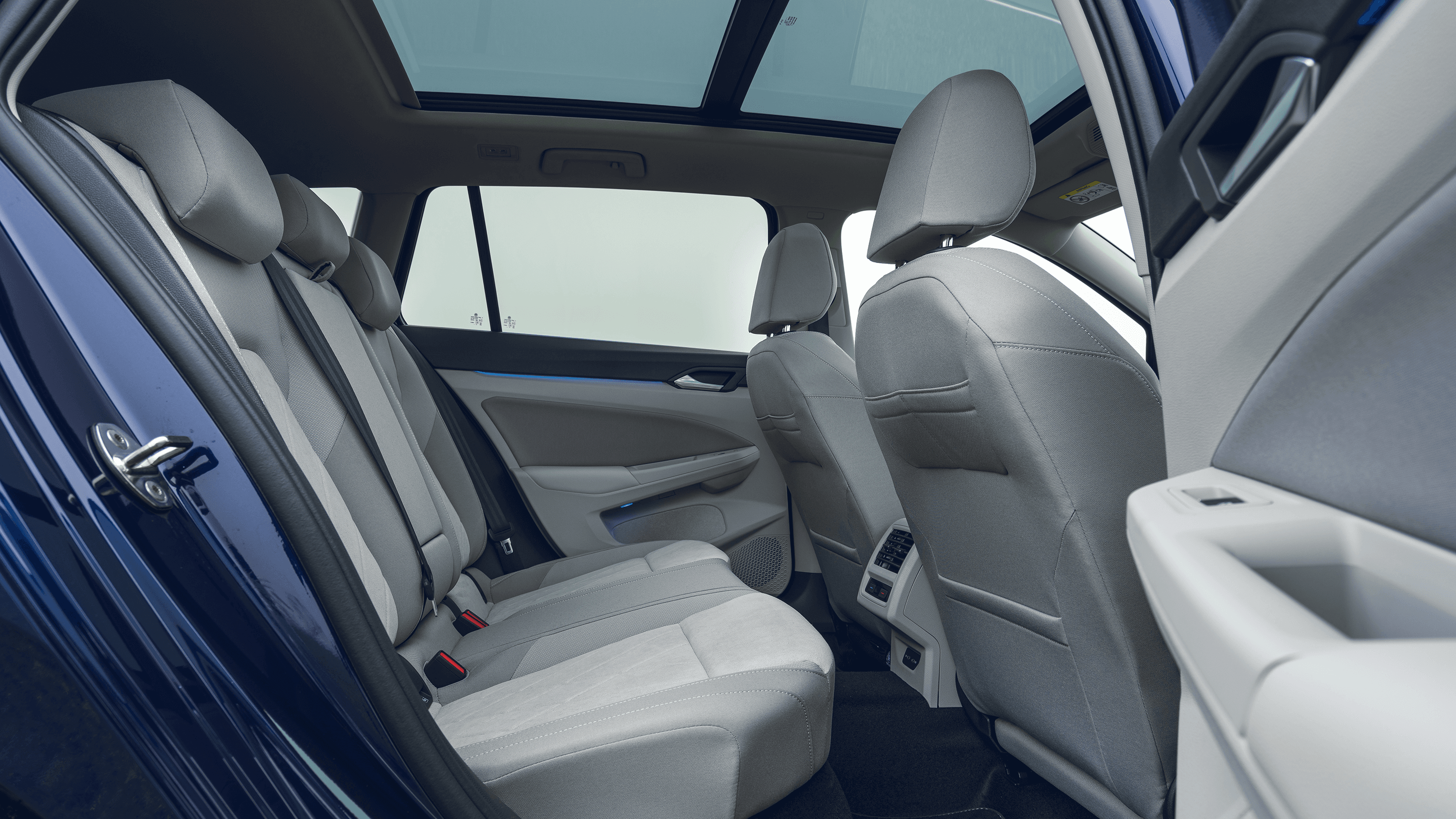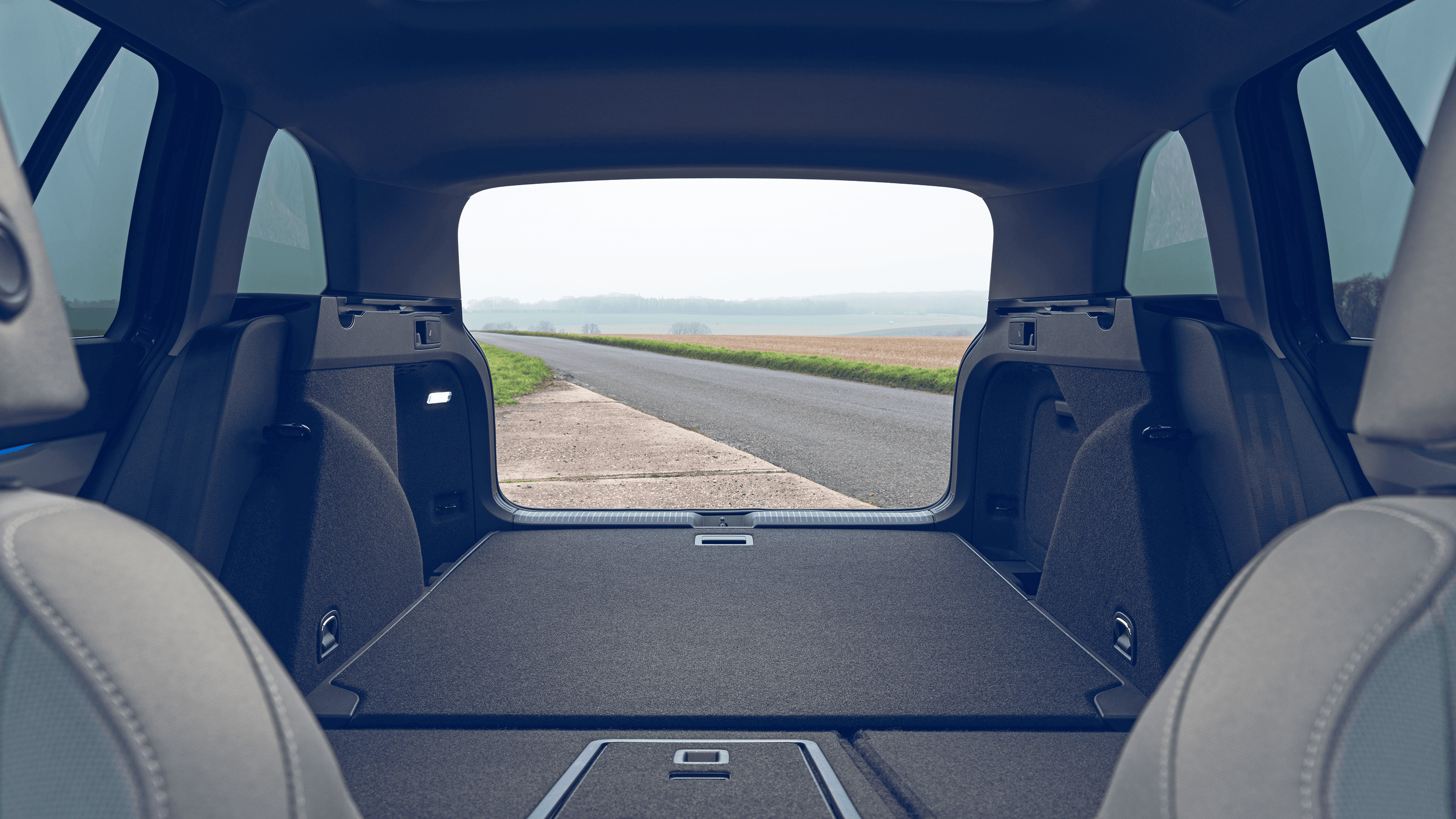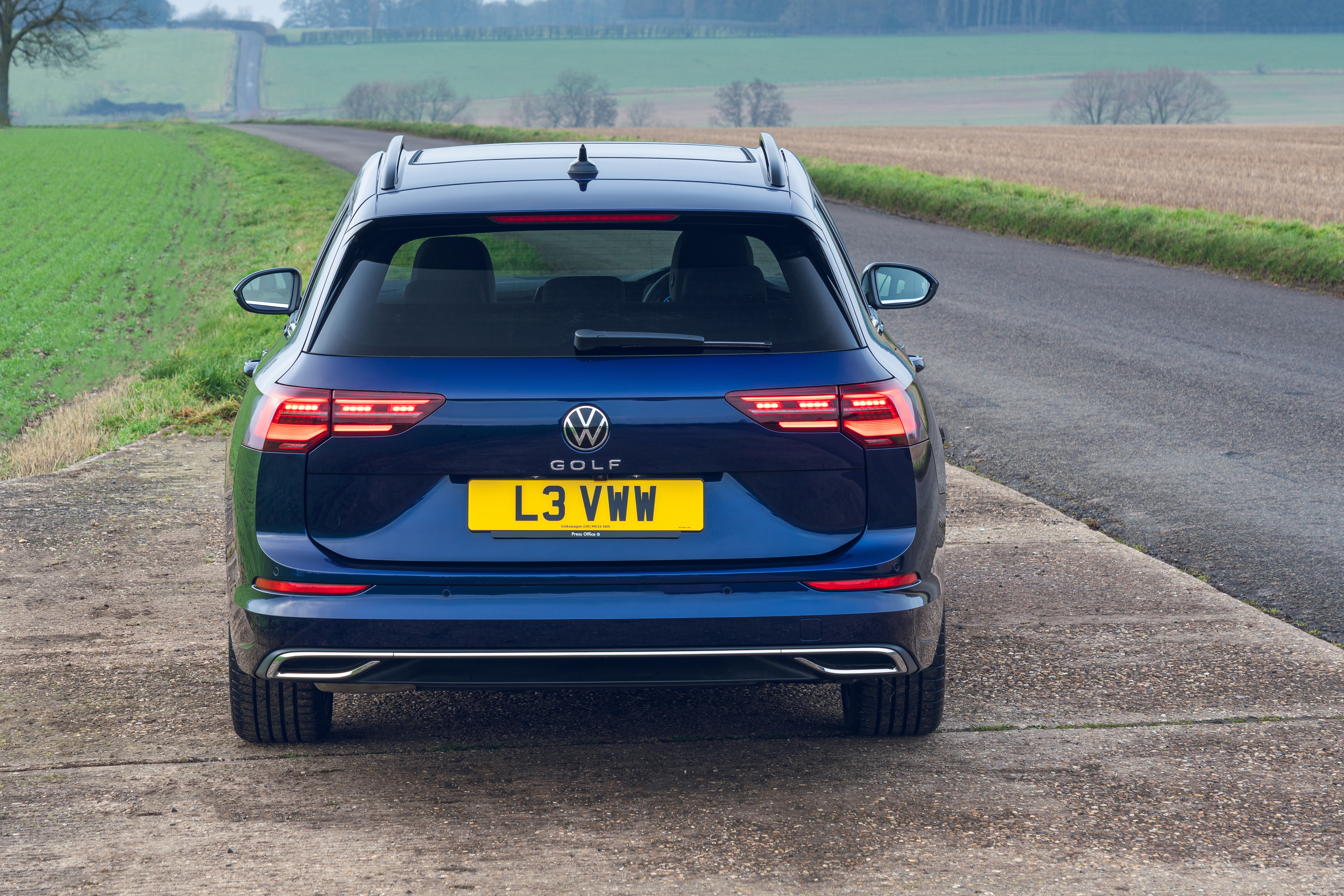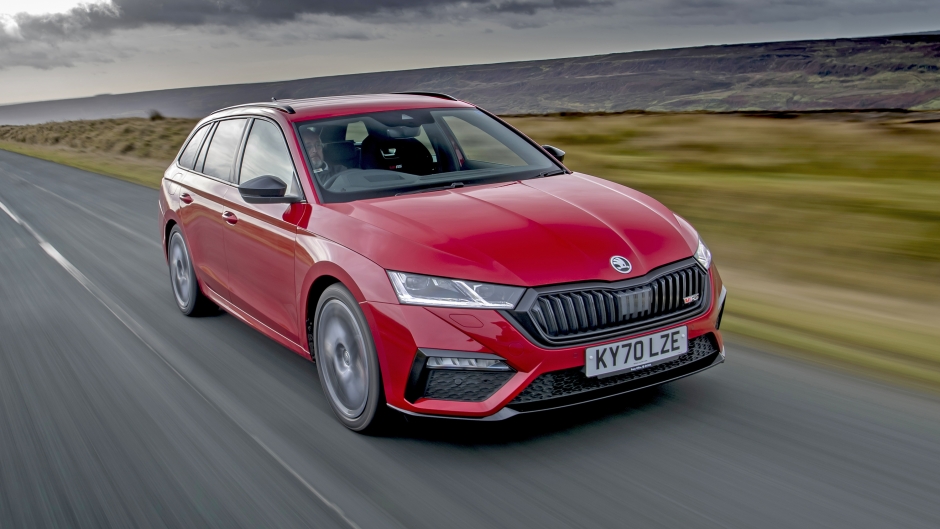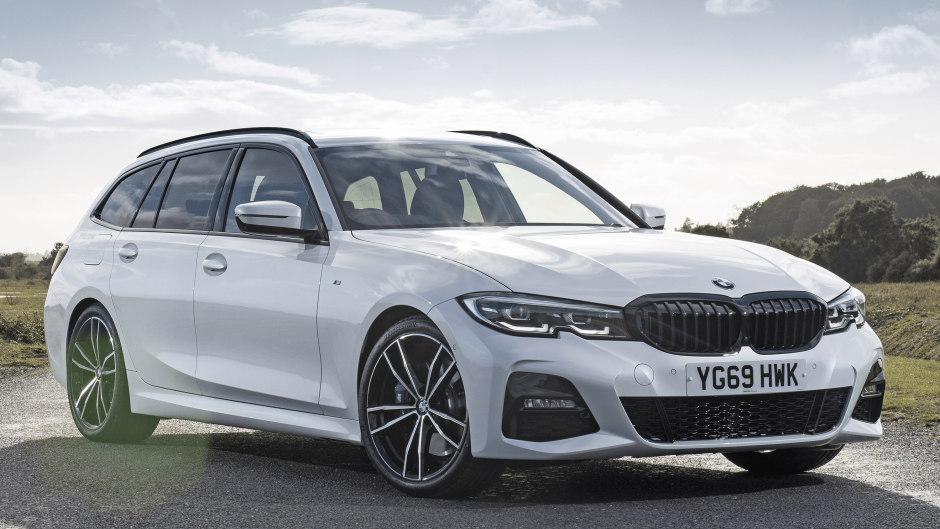Volkswagen Golf Estate Review
Like the Golf hatchback, this medium-sized estate is a high-quality car that’s available with a variety of trim levels and engine choices
Strengths & weaknesses
Practicality and flexibility are likely to be important to you if you’re in the market for a VW Golf. Despite its classy and upmarket feel, the Golf is a practical car for drivers who need to get people and luggage from ‘a’ to ‘b’ reliably. And if load-carrying capacity is high on your priorities, then the version of the Golf that you’ll want is the estate model.
Up front, the Golf Estate offers exactly the same amount of space as the regular hatchback, but behind the rear doors, there’s an elongated body that dramatically increases the estate car’s boot space to 611 litres. That's up from the 380 litres available in the regular hatchback model.
The range of engines closely mirrors the options available in the hatchback. This means there are a variety of turbocharged petrol engines, some with mild hybrid technology to boost efficiency and performance, along with a couple of diesel options.
There are, however, none of the plug-in hybrid versions you get with the hatchback Golf. There’s also no GTI version of the Golf Estate, although a high-performance four-wheel-drive 320hp Golf R Estate was launched in autumn 2021, so you can still get your performance Golf fix if you want an estate model.
The other all-wheel-drive option is the Golf Alltrack, which features raised suspension and grey plastic body cladding to give it the looks and some of the off-roading ability of a dedicated off-roader.
Inside, there’s a swish minimalist look to the cabin, which is dominated by a high-tech central touchscreen media system that controls many of the car’s functions, including the stereo, sat-nav and even the heater controls. There’s also a digital instrument display in lieu of traditional speedometer and rev counter dials.
It all looks very smart, but the fact that there are essentially no physical buttons to control any of the car’s main functions makes simple actions, such as adjusting the heating controls or retuning the radio, a bit of a faff.
The Golf Estate probably isn’t the car for you if outright driving fun is a big priority - there’s the Golf GTI hatchback for that and the smaller, lighter Golf R hatchback. Nevertheless, higher-powered models get a more sophisticated suspension setup and some trims come with adaptive suspension that means you can choose between a softer, more comfortable ride and a tauter, more sporty one.
Really, though, the Golf Estate’s trump card is transporting you, your family and their belongings in fuss-free comfort while treating you to some of the upmarket feel - albeit a bit diluted compared with older versions - that drivers of cars from desirable brands such as Audi, BMW and Mercedes enjoy.
Should I get a Volkswagen Golf Estate?
✔ Smart, classless image; practical but desirable
✔ Relatively compact exterior dimensions
✔ Fuel-efficient range of petrol and diesel engines
✘ Fiddly touchscreen controls can be annoying
✘ Doesn’t feel as solidly built as previous Golfs
✘ Some rivals offer more boot space
The Volkswagen Golf Estate is an immensely practical car, especially for those who need maximum boot space in a relatively small car. It’s spacious without being overly large and unwieldy to drive, and its engine options for the most part offer a good balance of power and fuel efficiency.
Yet for all its functionality, the Golf Estate still manages to make you feel good as a driver or passenger, with attractive styling inside and out, and a comfortable ride.
True, it isn’t as spacious as the closely related Skoda Octavia Estate by some margin (Skoda and VW are part of the same parent company), but it feels more upmarket. Likewise, it isn’t as fun to drive as the BMW 3 Series Touring, but it’s both cheaper and more practical.
The Golf Estate isn’t exactly an ‘on-trend’ style of car. If you want the latest thing - whether that’s a crossover SUV or an electric car - a Golf Estate won’t be right for you. But if you value space and practicality with a dash of upmarket style, then the Golf Estate should suit you nicely.
- Models explained
- Trim levels
- Engine/Motor
- Hybrid/Plug-in hybrid
- Batteries and range
- Charging/Charge time
- Best Golf Estate for
- Rivals
- Should I buy used?
- Dimensions
- Boot space
- Reliability
- Warranty
- Deals
Volkswagen Golf Estate (2020-present): models explained
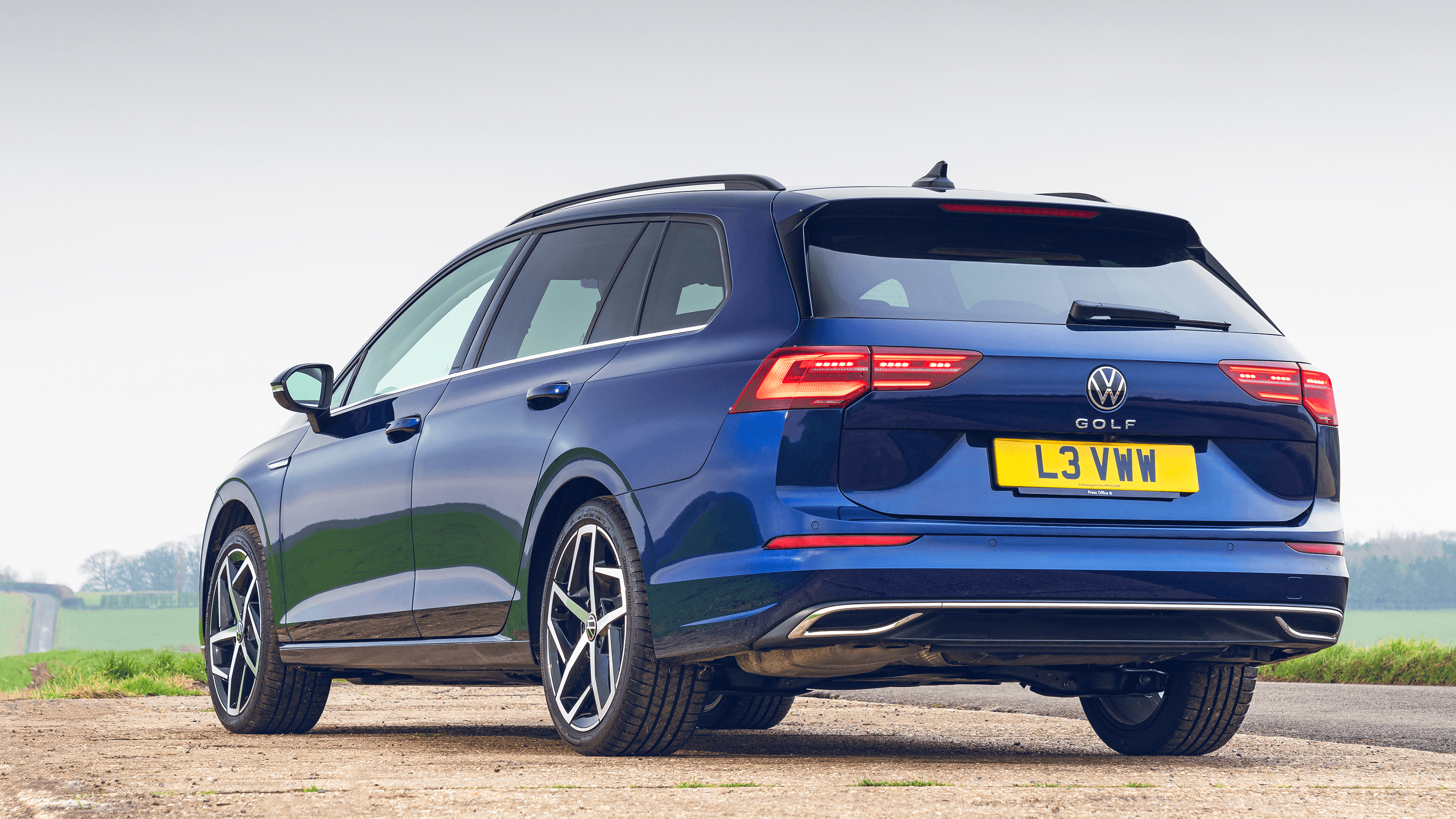
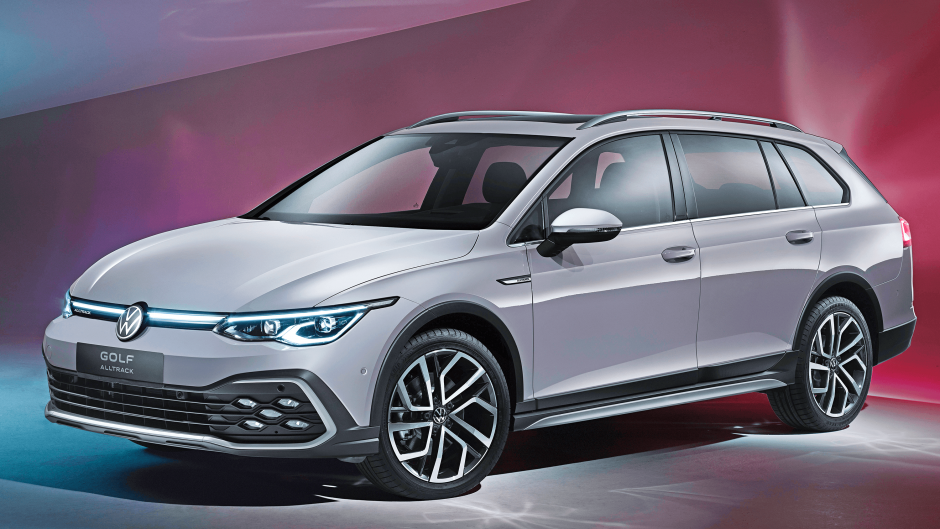
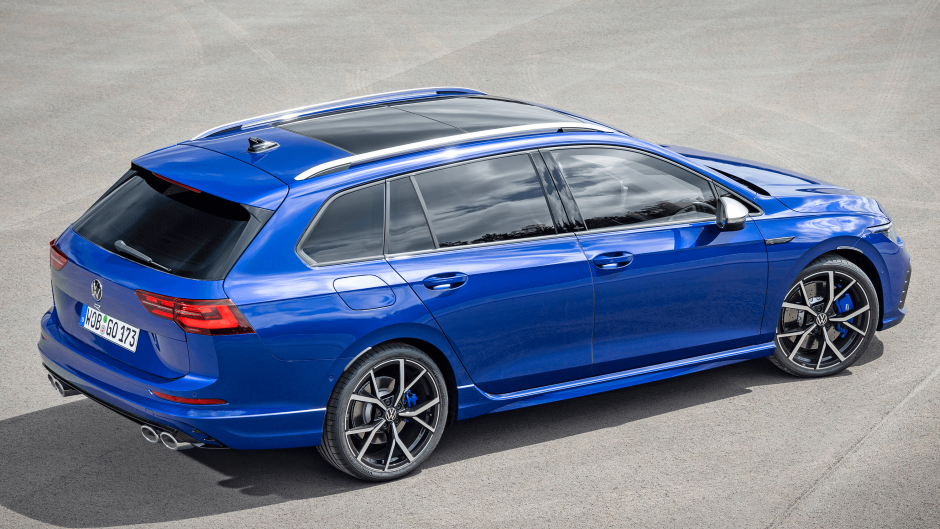
Volkswagen Golf Estate
There is essentially very little difference between the Golf hatchback and the Golf Estate. Both bodystyles get most of the same engine options and trim levels, including the powerful Golf R, available from around the end of 2021. There’s also the Golf Alltrack (covered below), which has SUV-style looks, raised suspension and four-wheel-drive. There is no Golf GTE plug-in hybrid option in the estate bodystyle, however.
The big difference between hatch and estate, of course, is the larger, longer rear end. This provides extra boot space which, at 611 litres, is impressive - though the Skoda Octavia Estate and Peugeot 308 SW do offer slightly larger boots.
Volkswagen Golf Alltrack
If you don’t want a full-on SUV, but do fancy a bit of the off-road ability and go-anywhere styling of the hardiest SUVs, then the Golf Alltrack could be ideal for you. It’s essentially a Golf Estate that rides 15mm higher, giving it more ground clearance than the normal car, and four-wheel-drive (branded as ‘4Motion’ by VW) is standard-fit.
Off-road-style bumpers give it a more rugged appearance, too, while power comes from a 200hp 2.0-litre diesel connected to a seven-speed automatic gearbox - there are initially no other engine or gearbox options for the Alltrack.
Volkswagen Golf R Estate
If you want a fast VW Golf Estate, the R model is definitely the right way to go. It gets the same 320hp 2.0-litre petrol engine, seven-speed automatic and four-wheel-drive system as the Golf R hatchback. It also gets the same sporty styling cues, with large alloy wheels and a distinctive four-tailpipe exhaust setup.
And it’s as practical an every-day load-carrier as every other Golf Estate. It offers the same 611 litres of luggage space, despite being four-wheel-drive, which can eat into boot space in some rivals, due to the additional mechanical gear needed under the boot floor to send power to the rear wheels.
Which Volkswagen Golf Estate to buy: trim levels

| Trim | Equipment | Deals |
| Life | Limited stock: There’s really no such thing as a poorly equipped modern Golf. Life is the entry-level trim, yet it still gets alloy wheels, climate control, LED headlights, automatic lights and wipers and adaptive cruise control. | |
| Style | Limited stock: Style trim level brings three-zone climate control, front sports seats, footwell lighting, exterior puddle lighting, upgraded LED lights with adaptive cornering and high-beam assists that will automatically dip your headlights for oncoming traffic. | |
| R-Line | From £10,799: With the R-Line comes selectable driving modes, a heated steering wheel and lowered suspension. There’s also sportier exterior styling details, tinted windows, sports seats and smart-looking metal pedals. | |
| Alltrack | Limited stock: The Alltrack is a high-spec trim level with plenty of equipment as standard. It’s also designed to be capable of some light off-roading, with a raised ride height, bodywork cladding and four-wheel-drive. It’s only available with a 2.0-litre 200hp diesel engine. | |
| R | Limited stock: With the estate version of the Golf R performance model there’s 320hp, clever 'torque-vectoring' technology that can move power to whichever wheel offers the most grip and unique sporty styling cues like four exhaust pipes. |
Best Volkswagen Golf Estate engine
With such a broad range of available engines - from simple petrol models to diesels - the truth is that there’s a Golf engine that will suit almost every type of driver.
However, if you’re looking for a great all-rounder, the best bet is probably the 1.5 eTSI 150. This engine’s party piece is its 48-volt mild hybrid technology. This is a form of hybrid tech that helps boost performance at low speeds and increases overall engine efficiency without the weight and complication of a big battery pack and separate electric motor - it’s integrated into the starter motor.
There’s also 'cylinder deactivation' technology that can run the car on just two of its four cylinders under a light load or even shut the engine off entirely when you’re coasting (down long hills, for example). What it all means is that you can get strong 50mpg fuel economy, and a quiet, smooth and powerful engine response.
Best Volkswagen Golf Estate model for…
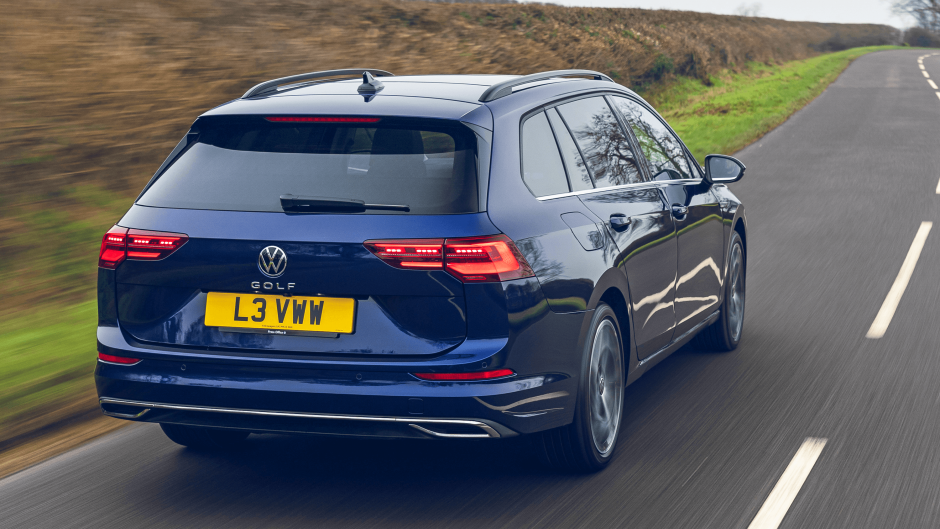
| Volkswagen Golf Estate Style 2.0 TDI 150: If you really want to squeeze the very best fuel-efficiency from your Golf, then the 115hp version of the diesel engine gets almost 63mpg. But the more powerful 150hp model is much more relaxing to drive and can still deliver more than 60mpg. | ||
| Volkswagen Golf Estate Style eTSI 150: with more than 600 litres of space, the boot of the Golf estate has the capacity to swallow everything a family can throw at it. Meanwhile, the smooth and quiet 1.5-litre petrol engine makes for comfortable and relaxed motorway cruising. |
||
| Volkswagen Golf R Estate: A power output of 320hp while offering the possibility of fuel economy of around 35mpg is quite an achievement. Add to that the estate car luggage space and the Golf R Estate makes quite a compelling case for itself if you want sports car pace but family car space. | ||
| Volkswagen Golf Alltrack: The appeal of off-road capability and high levels of equipment is undeniable, but the Alltrack is expensive when new. It’s also only available with a 200hp 2.0-litre diesel, so if diesel power is not for you, then a Golf Alltrack won't be right either. |
Volkswagen Golf Estate rivals
The variety of family estate cars based on medium-sized hatchbacks isn’t as broad as it once was - the popularity of high-riding SUV alternatives has seen to that - but there are still plenty to choose from.
Chief rivals for your money if you’re thinking of a Golf Estate include the Ford Focus Estate, the Kia Ceed Sportswagon and Peugeot 308 SW. The Golf has more boot space than the Focus but both the Kia Ceed and Peugeot 308 offer more luggage space. And if you really want a lot of space, then the great value Skoda Octavia Estate will be the car for you - it can hold up to 640 litres. That’s less than the 660 litres of the 308 SW, but the Octavia counters this with much more rear-seat space.
If you want a more upmarket badge on the bonnet of your estate car, then something like a Volvo V60 or a BMW 3 Series might well appeal, but they’re likely to cost you more to buy or finance, and offer less boot space - 529 litres and 500 litres respectively.
Used Volkswagen Golf Estate: should I buy one?
There should be plenty of Golf Estates to choose from since, although SUVs have become an increasingly popular alternative, family estate cars still sell in reasonable numbers.
In addition, the VW Golf name badge is a desirable one, so a Golf Estate should hold onto its value fairly well. This means that, although the overall initial price may seem quite high - especially compared with rivals from Skoda and Kia - the car is likely to be worth more when you come to hand it back to the finance company or sell it on. This also means that PCP finance monthly payments should be reasonably attractive, too.
The challenge is finding a Golf Estate with the correct engine and trim to suit you. High-spec models will be expensive when new, so think carefully before opting for an R-Line or an Alltrack, but on the other hand base-spec Life models may be harder to sell on, which is something to think about if you plan to pay cash or choose a finance option where you own the car at the end of the contract.
Volkswagen Golf Estate practicality: dimensions and boot space
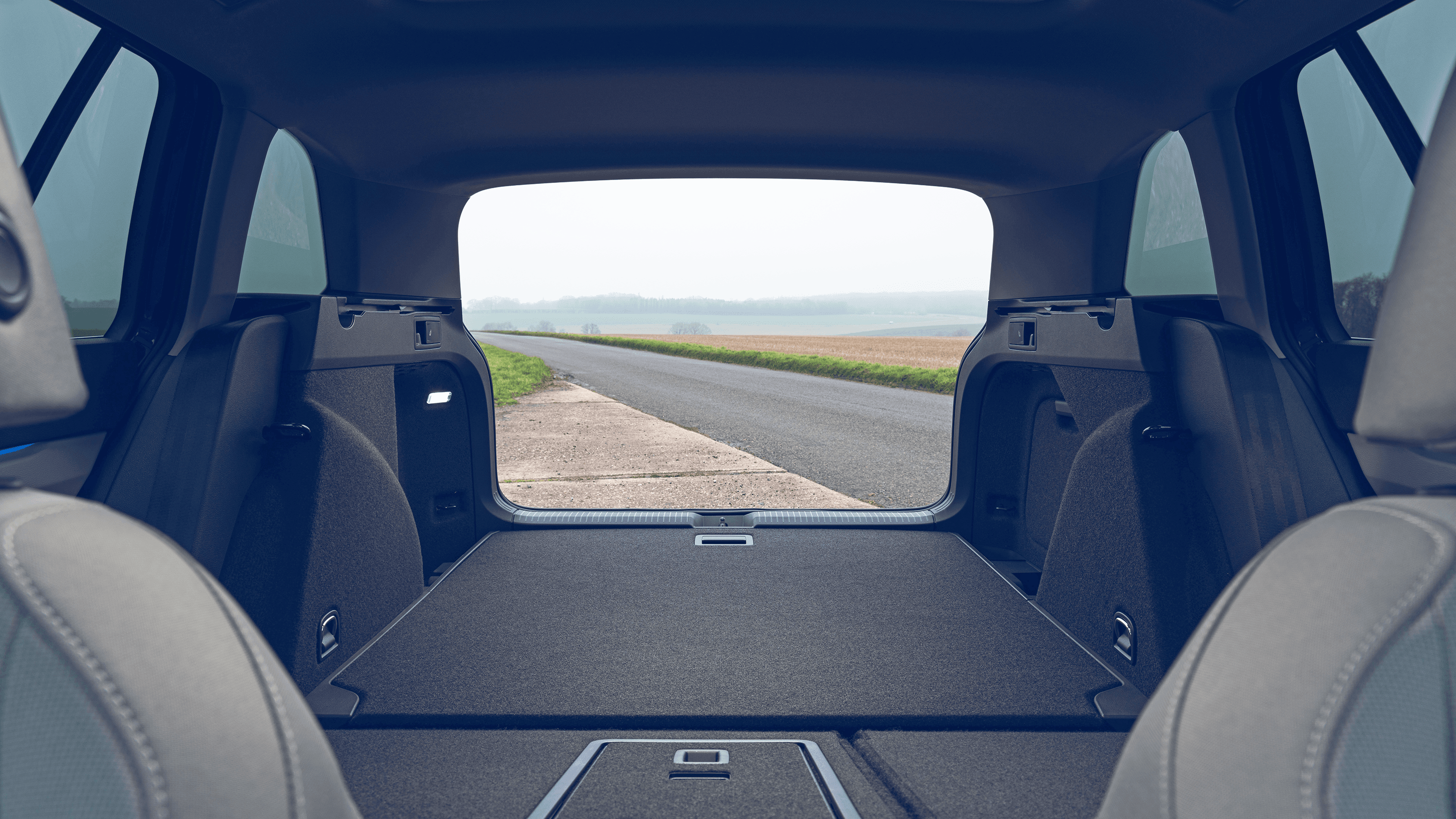
Volkswagen Golf Estate dimensions
With a length of just over 4.6 metres, the Golf Estate is around 40 centimetres longer than the regular hatchback model, almost all of which is in the bodywork behind the rear wheels. This means that while rear passenger space is slightly improved over the Golf hatchback, by far the biggest difference is in extra boot space.
This model is also a scant few centimetres longer than the previous version of the VW Golf Estate, but not enough to make a noticeable difference. It’s also just under 1.5 metres tall and 1.8 metres wide (or 2.07m with mirrors), which is almost identical to similar rivals like the Ford Focus and Kia Ceed SW.
All in all, the Golf Estate strikes a good balance between being large enough to accommodate people and luggage without being too large for typical parking spaces or driveways.
| Length 4,633mm | Width 1,789mm |
| Height 1,455mm | Weight 1,255kg - 1,465kg |
Volkswagen Golf Estate boot space
Boot capacity in this version of the VW Golf Estate is 611 litres, which is pretty much on par for this sort of car, and six litres more than in the previous version. And it's much more than the 380 litres of luggage space you’ll find in the hatchback Golf.
It’s also better than the Toyota Corolla Touring Sports, which has up to 598 litres and the Ford Focus Estate which offers 575 litres. The Kia Ceed SW, meanwhile, can accommodate 625 litres of luggage and the Skoda Octavia Estate 640 litres. The Peugeot 308 SW has them all beaten, however, with 660 litres of space, although this comes at the expense of rear-seat legroom, which is relatively tight.
It’s worth mentioning as well that four-wheel-drive estate models don’t sacrifice any boot space to accommodate the extra mechanical parts - which is not always the case with cars like this.
| Seats up 611 litres | Seats down 1,642 litres |
Volkswagen Golf Estate reliability
Volkswagens are largely reliable, but the brand's cars aren’t up there with the very best manufacturers in terms of outright dependability - they tend to rank somewhere in the middle for owner satisfaction and in reliability surveys.
In the case of this version of the Golf, early cars seem to suffer from glitches with the media system and touchscreen interface, but these are likely to be ironed out with updates.
Other than that, this generation of VW Golf should provide reliable, robust family motoring at least on a par with most other family hatchbacks.
Volkswagen Golf Estate warranty
Volkswagen offers a three-year warranty with a 60,000-mile limit. That’s more or less the industry standard, but not as good as the seven-year warranties offered by Kia, SsangYong and MG. Toyota's warranty will last longer from new, too, offering up to 10 years of cover.
Where the VW warranty is more impressive is in the way it offers unlimited mileage for the first two years - which is great if you cover lots and lots of regular motorway miles and may exceed 60,000 miles over the car's first two years.
Coverage excludes all the usual wear-and-tear items such as brakes, clutch, tyres and suspension, but VW will cover these for the first six months or 6,500 miles. The same short-term warranty protection applies to mechanical adjustments.
| 3 years | 60,000 miles |
AVERAGE REPAIR COST PAID BY WARRANTYWISE: £537
CLICK HERE FOR MORE INFORMATION ON USED CAR WARRANTIES
Best Volkswagen Golf Estate deals
The most popular Golf is the 130hp 1.5 TSI in Style spec. And with good reason - it strikes a happy medium of reasonable power, decent equipment levels and value for money.
Style spec is the sweet spot for pretty much any Golf, and the same applies to the estate models. It balances reasonable levels of standard equipment (with three-zone climate control, high-beam assist LED headlamps and numerous other desirable features) with good value for money. More expensive R-Line cars just cost more for stuff you probably don’t need.
In terms of engines, the 130hp 1.5 TSI petrol is a good choice as it’s reasonably economical and powerful enough for nearly all everyday situations. Meanwhile, if you’re focused on the best possible fuel economy - or you cover a lot of miles - a diesel Golf Estate is still a good bet. You should be able to achieve 50mpg-plus in everyday driving , and you can find the 150hp 2.0-litre TDI version on BuyaCar from £206.63 per month.
The most exciting option is the 320hp four-wheel-drive Golf R Estate, which can accelerate from 0-62mph in 4.8 seconds. This is pretty rapid for this type of car and thanks to the four-wheel-drive system, the R Estate is able to make the most of the engine's substantial power at all times of year, without spinning the power away through wheelspin.
Other Editions
.jpg?width=400&height=225&format=webp)
Golf (2013 – 2020)
The VW Golf is the hatchback that's fit for any occasion - whether that occasion requires practicality, fuel economy or performance
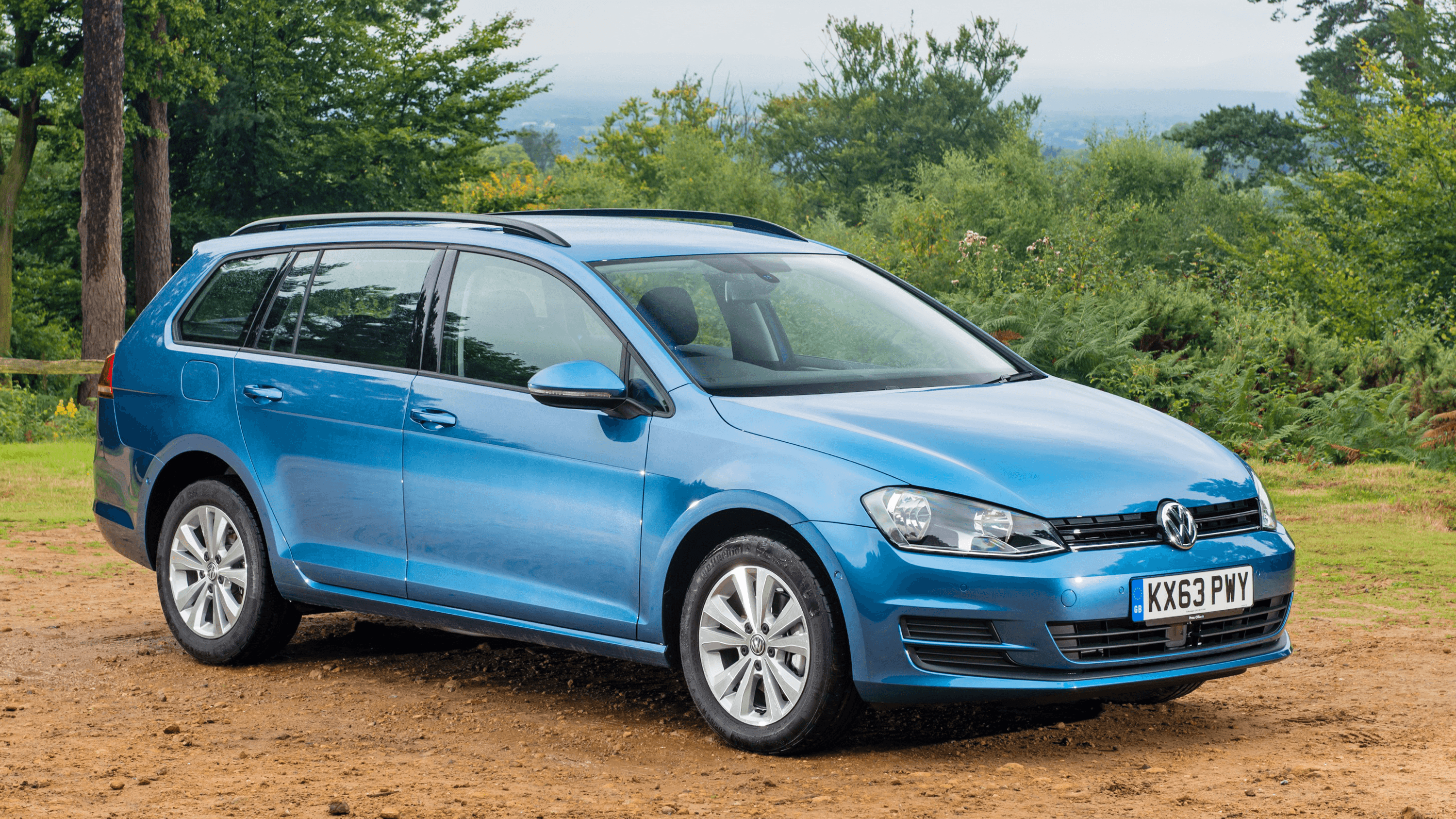
Golf Estate (2013 – 2020)
The VW Golf Estate is a practical and versatile estate that delivers low running costs, plenty of luggage space and a high-quality feel
.jpg?width=400&height=225&format=webp)
Golf GTI (2013 – 2020)
It’s faster and more advanced than ever, but the Volkswagen Golf GTI hides beneath a sober design
.jpg?width=400&height=225&format=webp)
Golf SV (2013 – 2020)
A bigger and more practical version of the Golf. It’s a sensible choice but lacks the desirability of SUV-inspired crossover rivals.
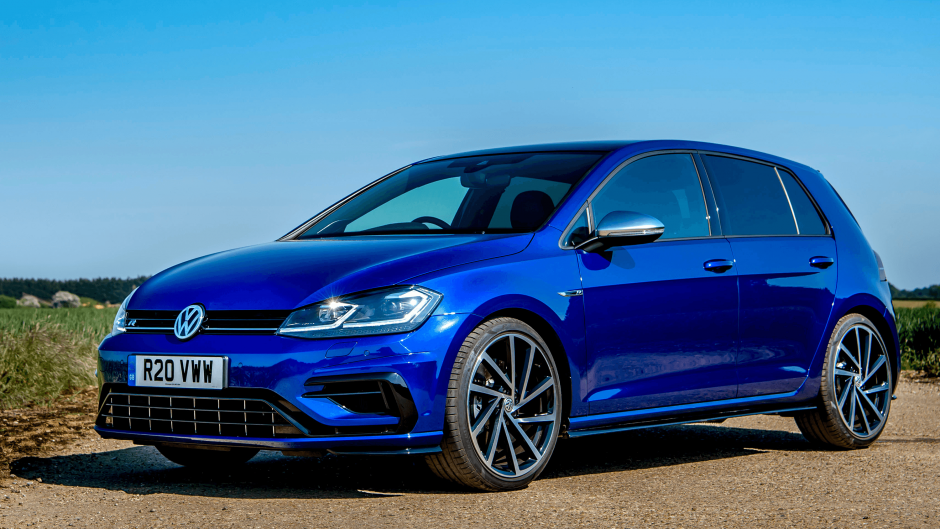
Golf R (2014 – 2020)
Few cars combine driving thrills with everyday hatchback usability and reasonable running costs in the way the VW Golf R does

Golf GTE (2015 – 2020)
The green VW Golf GTE can run on electric power, but has a petrol engine for long-distance journeys

Golf (2020)
The VW Golf is a popular medium hatchback that looks and feels like a high-quality product

Golf GTI (2020)
The Golf GTI balances performance and driving fun with practicality and running costs - find out why it's the default hot hatchback for many


